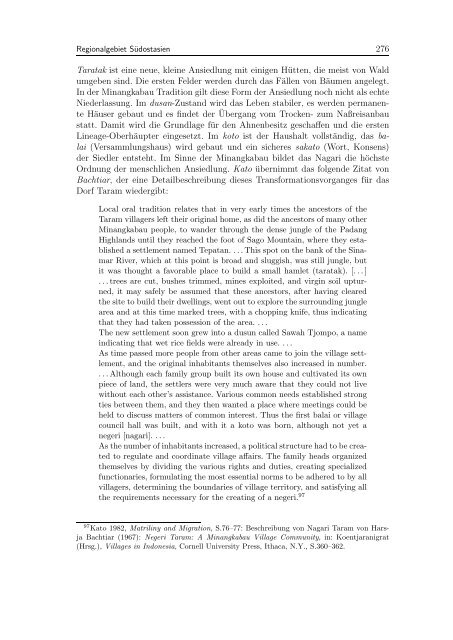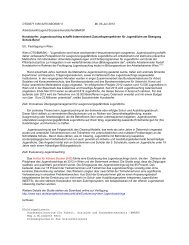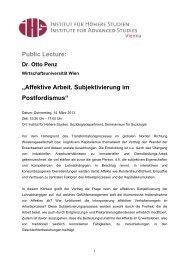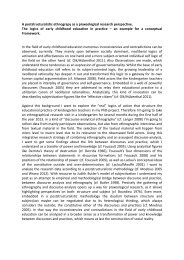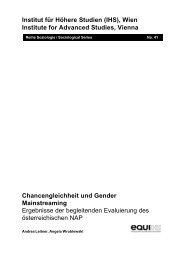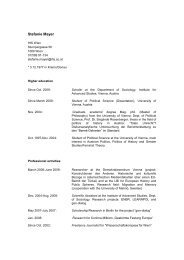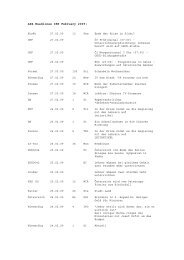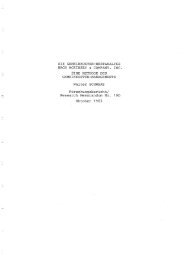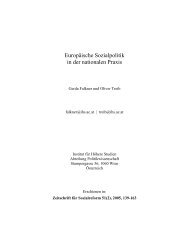Matrilineare Gesellschaften - Institute for Advanced Studies
Matrilineare Gesellschaften - Institute for Advanced Studies
Matrilineare Gesellschaften - Institute for Advanced Studies
Sie wollen auch ein ePaper? Erhöhen Sie die Reichweite Ihrer Titel.
YUMPU macht aus Druck-PDFs automatisch weboptimierte ePaper, die Google liebt.
Regionalgebiet Südostasien 276<br />
Taratak ist eine neue, kleine Ansiedlung mit einigen Hütten, die meist von Wald<br />
umgeben sind. Die ersten Felder werden durch das Fällen von Bäumen angelegt.<br />
In der Minangkabau Tradition gilt diese Form der Ansiedlung noch nicht als echte<br />
Niederlassung. Im dusan-Zustand wird das Leben stabiler, es werden permanente<br />
Häuser gebaut und es findet der Übergang vom Trocken- zum Naßreisanbau<br />
statt. Damit wird die Grundlage für den Ahnenbesitz geschaffen und die ersten<br />
Lineage-Oberhäupter eingesetzt. Im koto ist der Haushalt vollständig, das balai<br />
(Versammlungshaus) wird gebaut und ein sicheres sakato (Wort, Konsens)<br />
der Siedler entsteht. Im Sinne der Minangkabau bildet das Nagari die höchste<br />
Ordnung der menschlichen Ansiedlung. Kato übernimmt das folgende Zitat von<br />
Bachtiar, der eine Detailbeschreibung dieses Trans<strong>for</strong>mationsvorganges für das<br />
Dorf Taram wiedergibt:<br />
Local oral tradition relates that in very early times the ancestors of the<br />
Taram villagers left their original home, as did the ancestors of many other<br />
Minangkabau people, to wander through the dense jungle of the Padang<br />
Highlands until they reached the foot of Sago Mountain, where they established<br />
a settlement named Tepatan. . . . This spot on the bank of the Sinamar<br />
River, which at this point is broad and sluggish, was still jungle, but<br />
it was thought a favorable place to build a small hamlet (taratak). [. . . ]<br />
. . . trees are cut, bushes trimmed, mines exploited, and virgin soil upturned,<br />
it may safely be assumed that these ancestors, after having cleared<br />
the site to build their dwellings, went out to explore the surrounding jungle<br />
area and at this time marked trees, with a chopping knife, thus indicating<br />
that they had taken possession of the area. . . .<br />
The new settlement soon grew into a dusun called Sawah Tjompo, a name<br />
indicating that wet rice fields were already in use. . . .<br />
As time passed more people from other areas came to join the village settlement,<br />
and the original inhabitants themselves also increased in number.<br />
. . . Although each family group built its own house and cultivated its own<br />
piece of land, the settlers were very much aware that they could not live<br />
without each other’s assistance. Various common needs established strong<br />
ties between them, and they then wanted a place where meetings could be<br />
held to discuss matters of common interest. Thus the first balai or village<br />
council hall was built, and with it a koto was born, although not yet a<br />
negeri [nagari]. . . .<br />
As the number of inhabitants increased, a political structure had to be created<br />
to regulate and coordinate village affairs. The family heads organized<br />
themselves by dividing the various rights and duties, creating specialized<br />
functionaries, <strong>for</strong>mulating the most essential norms to be adhered to by all<br />
villagers, determining the boundaries of village territory, and satisfying all<br />
the requirements necessary <strong>for</strong> the creating of a negeri. 97<br />
97 Kato 1982, Matriliny and Migration, S.76–77: Beschreibung von Nagari Taram von Harsja<br />
Bachtiar (1967): Negeri Taram: A Minangkabau Village Community, in: Koentjaranigrat<br />
(Hrsg.), Villages in Indonesia, Cornell University Press, Ithaca, N.Y., S.360–362.


